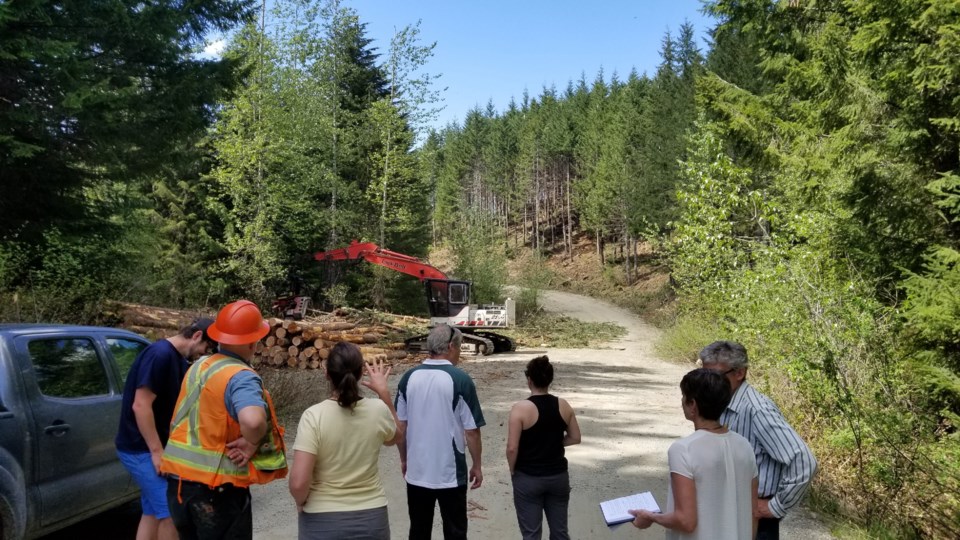Representatives from the Cheakamus Community Forest held their spring open house on Thursday, June 7.
Plans for this year involve a major forest thinning project along the Cheakamus Lake Forest Service Road (FSR) and retention logging of areas in the Callaghan Valley and an area above Jane Lakes.
The thinning project begins at the start of the forestry road and ends at the parking lot that allows you to drop into the Cheakamus Lake section of Garibaldi Park.
The aim is to thin out a band of forest, which will help prevent the rapid spread of wildfire, explained Tom Cole, a forest manager for the non-profit Cheakamus Community Forest Society (CCFS).
"You can imagine if there was a fire on say a Saturday or Sunday," he said. "There's a lot of people who use (the Cheakamus Lake FSR for recreation), whether they're parked in there or driving back and forth."
Moreover, the area lies "right on the flank of Whistler Mountain," said Cole.
Around 115 hectares in total area will be thinned as part of the project, with workers hoping to get the forest down to around 350 trees per hectare (from around 800 to 1,000).
"The idea is we leave the bigger trees and take out the little ones," said Cole, adding that a similar fuel-thinning project in the Callaghan Valley has proven tremendously effective.
Harvested trees, which count towards the CCFS's log count, will in turn be sold to fund the project. The fuel-reduction effort is a multi-year project, with funding secured for the next two years from the Resort Municipality of Whistler and the Forest Enhancement Society of British Columbia.
Cole said that after discussions with stakeholders, the CCFS has decided to begin the work in the fall and work straight through the winter.
In terms of harvesting, Cole estimates that the CCFS will harvest around 6,000 cubic metres (m3) from its fuel reduction project and between 13,000m3 and 15,000m3 through retention logging. The forest has a maximum allowable annual cut of 21,000m3, which is set by the B.C. Government.
The CCF also has plans to create industrial access to the Black Tusk FSR by building the Basalt Valley Connector, as well as regain access off the Daisy Forestry Road.
While supportive of the fuel-reduction projects, Claire Ruddy, executive director of the Association of Whistler Area Residents for the Environment (AWARE), voiced concerns about the volume of old-growth forest that will be harvested this year.
"All of the volume is coming from old-forest areas, which is qualified as over 250 years old," she said, stressing the unique "biodiversity values" of such forest.
Ruddy is particularly concerned about the loss of trees like Yellow-cedar, saying that AWARE did a study a year back that discovered a 1,300-year-old specimen in the Callaghan Valley a mere 10 metres away from a cut block.
Easily accessible mature second growth "isn't quite mature enough" to get good value at market, so "what's happening is each year we're continually seeing the loss of old-growth forests," said Ruddy, adding that AWARE is also concerned about the planned road construction.
"It doesn't seem like there has been a meaningful review on how appropriate it is to open new landscapes," added Ruddy, who worries that an aversion to seeing logging by mountain bikers and Whistlerites is forcing the CCFS further into the backcountry.
"If we're going to have this logging on the landscape, it is going to impact other values," Ruddy said.




